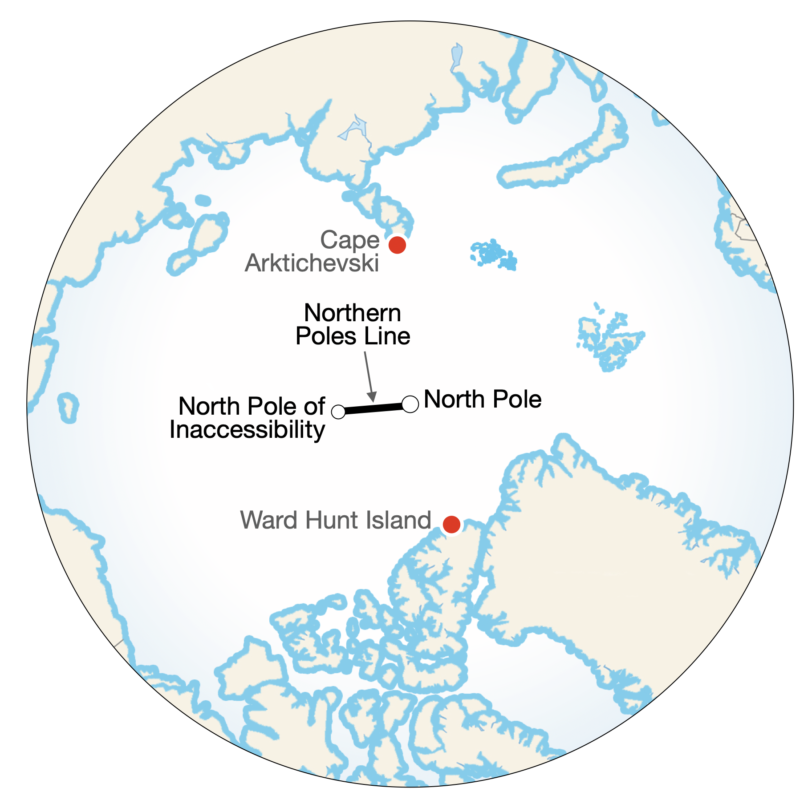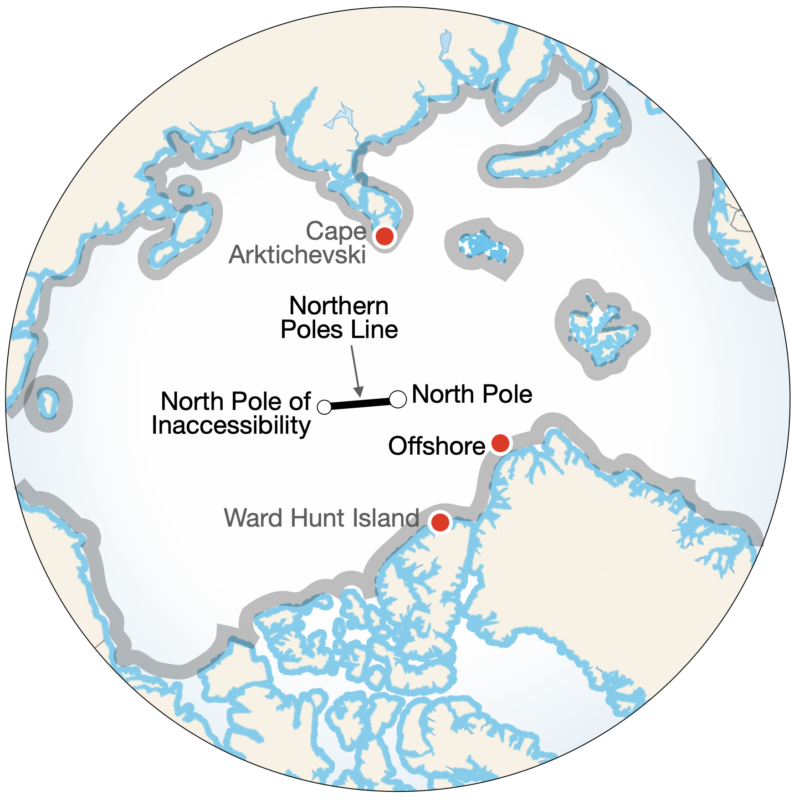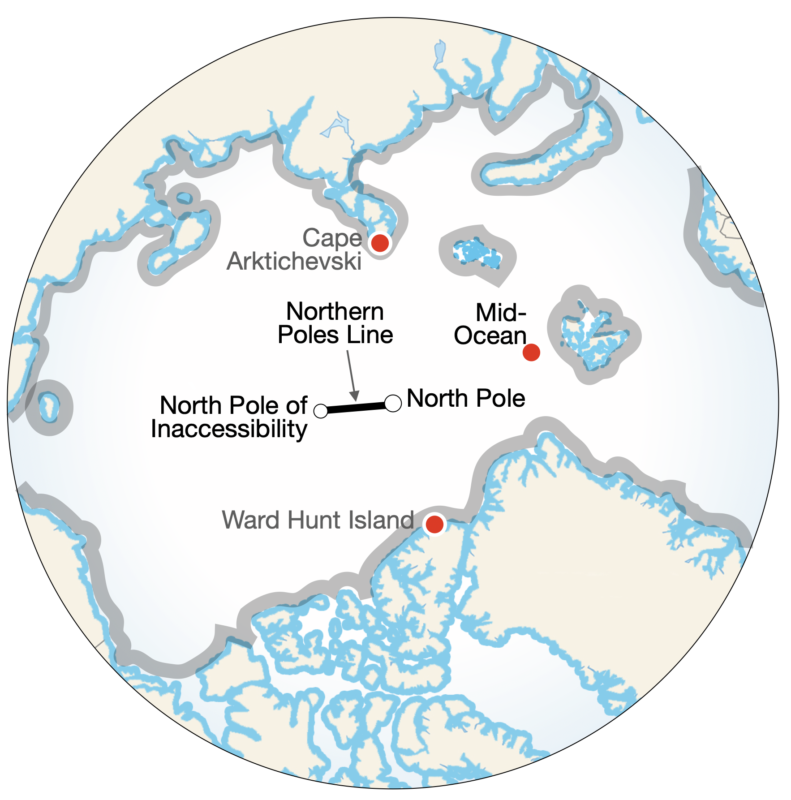Arctic Ocean Margins
Margins are the start and end boundaries of a journey
.

An Arctic Ocean Coastline margin is any point on shore or land. Any Arctic Ocean journey utilising coastline margins is designated a Full Expedition or Full Crossing (Full refers to full-length). Examples:
Note:
|
 |
.

An Arctic Ocean Offshore margin is any point within 50km of shore. The Coastline Margin is reserved for any journey that intended to start or end on land but was forced to utilise offshore margins due to impassable ice conditions. Such a journey is designated an Expedition or Crossing. Example: Cape Arktichevski to North Pole to 25km of Greenland Note:
|
 |
.

| An Arctic Ocean Mid-Ocean margin is any point more than 50km from shore. Any Arctic Ocean journey utilising mid-ocean margins is designated a Mid-Ocean Expedition or Mid-Ocean Crossing. Examples:
Notes:
|
 |
.